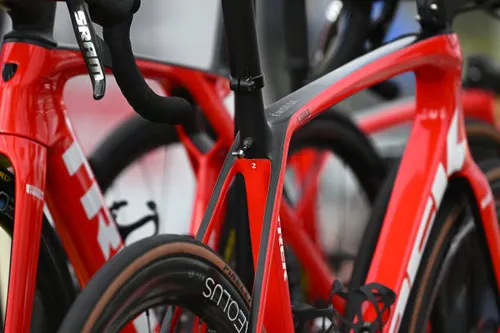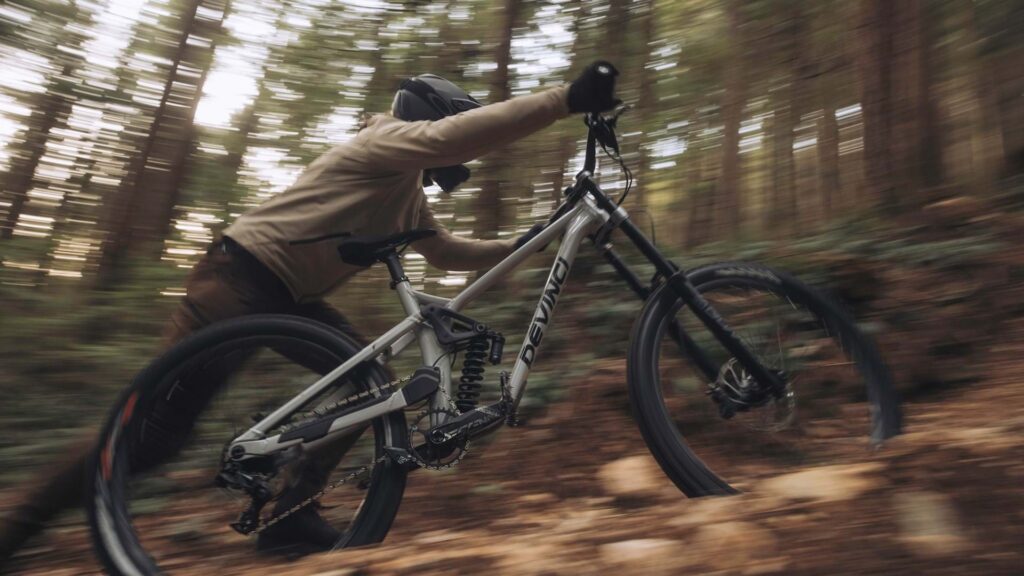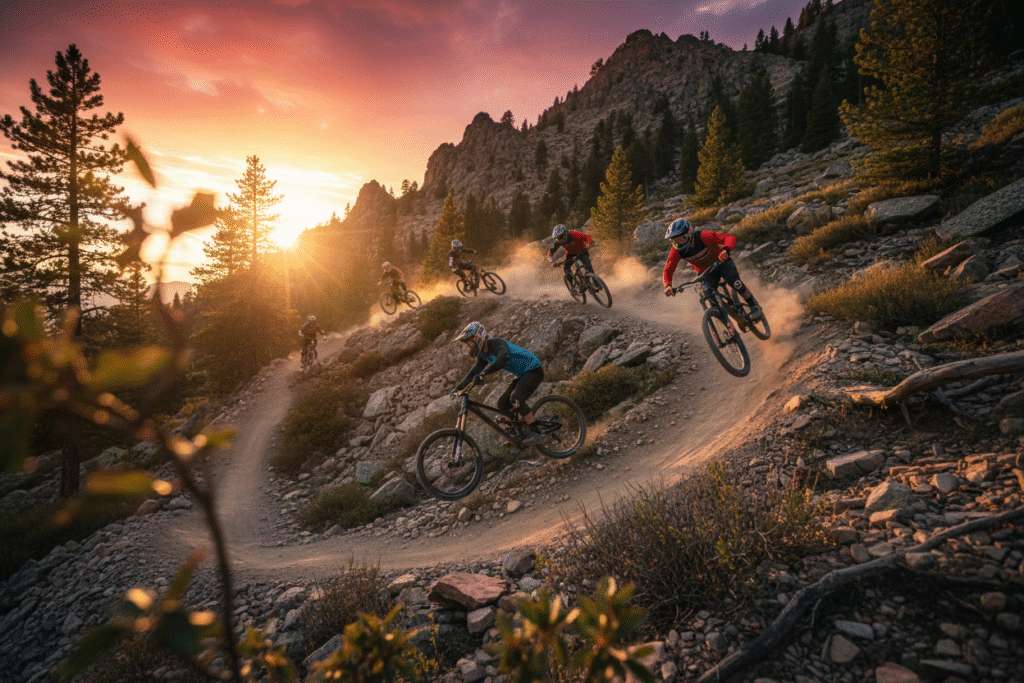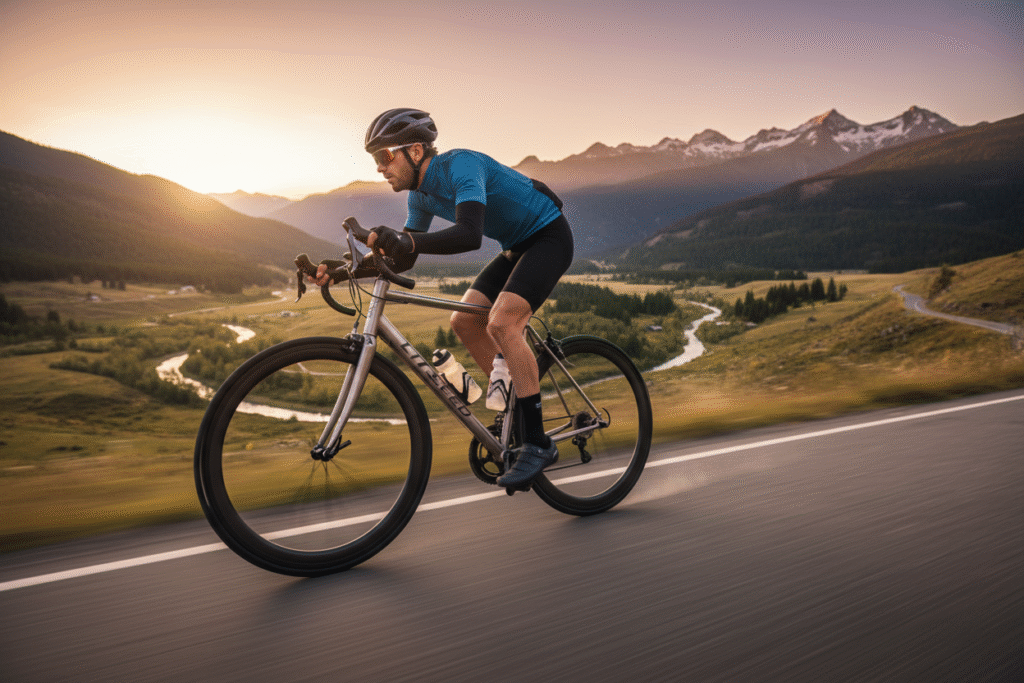Trek sits in rare territory: a brand that feels familiar to almost every rider, yet still invests heavily in engineering and refinement. Since 1976, the Wisconsin-based company has grown from a small operation in Waterloo to one of the most complete full-line bike manufacturers on the planet. By 2026, Trek has a presence in nearly every segment—road, gravel, XC, trail, enduro, downhill, e-bikes, commuters, kids’ bikes—and does so with a consistent focus on stability, comfort, and long-term support.
If you want one brand that can outfit an entire riding life—from first kids’ bike to WorldTour race machine—Trek is one of the few that can genuinely deliver.
Brand Snapshot
| Category | Details |
|---|---|
| Founded | 1976 |
| Headquarters | Waterloo, Wisconsin, USA |
| Core Categories | Road, Gravel, XC, Trail, Enduro, DH, E-Bikes, Urban, Fitness, Kids |
| Flagship Models | Madone, Émonda, Domane, Checkpoint, Boone, Fuel EX, Top Fuel, Slash, Session, Rail, Allant+ |
| Market Position | Accessible premium brand with a huge dealer network and global reach |
Trek occupies the middle ground between boutique and mass-market. The brand feels more approachable than ultra-exclusive names, but more polished and technically mature than most value or direct-to-consumer options. A big part of that is the dealer network: test rides, fittings, service, and warranty support are all easy to access.
Heritage & Evolution
Trek’s history starts in a barn. Literally.
In 1976, Dick Burke and Bevil Hogg set out to build high-quality touring frames at a time when most bikes in the U.S. were either imported or fairly basic. Steel came first, then aluminum, and eventually, Trek turned itself into one of the first large-scale specialists in carbon manufacturing.
Key Milestones
- 1976 – Trek launches with handmade steel frames in Wisconsin
- 1982 – First full road bike lineup enters production
- 1992 – OCLV carbon technology debuts, pushing frame weight and stiffness into new territory
- 2000s – Global visibility surges thanks to road racing success and carbon development
- 2013 – IsoSpeed decoupler redefines endurance road comfort on the Domane
- 2020–2025 – Major e-bike expansion with Bosch systems and refined commuter platforms
- 2023 – Madone redesign introduces IsoFlow aero shaping and integrated cockpit updates
By 2026, Trek’s identity is built on this mix of race-proven engineering and a measured, rider-focused approach to innovation.
How Trek Approaches Bike Design
Trek doesn’t usually chase extremes. Instead, its bikes tend to feel composed and versatile.
Balanced Performance
Whether you’re talking about a Madone race bike or a Rail e-MTB, you’ll notice similar traits: stable handling, predictable feedback, and geometry that works for more than just elite riders. Even the race platforms are tuned so they don’t feel harsh or nervous.
Intentional, Long-Cycle Innovation
Trek leans on technologies that evolve over multiple generations rather than disappearing after a year or two. OCLV carbon, IsoSpeed/IsoFlow, and ABP suspension are long-running systems that get refined rather than constantly replaced.
Wide-Ranging Rider Accessibility
The catalog is huge—and deliberately so. Trek builds for:
- First-time riders and kids
- Gravel and adventure riders
- XC racers and marathon riders
- Trail and enduro riders
- Commuters and e-bike users
- WorldTour and World Cup professionals
Few brands cover as many use cases with a coherent design language.
Technology & Engineering Highlights
OCLV Carbon
OCLV (Optimum Compaction, Low Void) is Trek’s carbon process, focused on:
- Tight resin control and compaction
- Minimizing voids inside the laminate
- Predictable stiffness and ride quality from size to size
It’s one of the reasons Trek has such a long history of competitive carbon frames across road, gravel, and MTB.
IsoSpeed & IsoFlow
IsoSpeed
Used on endurance and comfort-focused platforms like the Domane. It allows the seat tube (or seat mast) to flex more independently of the top tube, adding comfort without resorting to gimmicks or extreme geometry.
IsoFlow
Found on the latest Madone. Instead of a separate pivot, the frame uses an open “flow” channel around the seat mast to:
- Smooth airflow around the rider
- Reduce frame weight
- Add a bit more rear compliance
Suspension Systems (MTB)
Trek’s mountain bikes are built around several core ideas:
- ABP (Active Braking Pivot): Keeps the suspension active even while braking, especially useful on steep, technical descents.
- RE:aktiv & ThruShaft: Shock technologies designed to improve small-bump sensitivity and keep the bike tracking cleanly through chatter.
Combined with modern geometry—longer reach, slacker head tubes, steeper seat angles—these systems give Trek’s trail and enduro bikes a notably composed character.
E-Bike Integration (Bosch-Driven)
Trek has leaned heavily into Bosch for e-bike systems, especially in:
- Rail (e-MTB)
- Allant+ (commuter / urban)
The upside is strong diagnostics, worldwide dealer support, and reliable long-term parts availability. For riders who want their e-bike to be serviceable years down the line, this is a major plus.
Sustainability Work
Trek is one of the more public brands about sustainability, including:
- Increased use of recycled plastics in accessories
- Packaging reduction and more recyclable materials
- Carbon recycling and reclamation pilot programs
- Transparency via published sustainability reporting
It’s not perfect, but it’s more concrete than many brands’ marketing lines.
Core Trek Models & Where They Fit
Madone — Aero Road Flagship
Trek’s aero race bike, featuring aggressive geometry, deep integration, and the distinctive IsoFlow cutout. It’s built for speed, especially on rolling and flat terrain.
Best for: competitive road riders, crit racers, riders chasing every marginal gain in aero efficiency.
Émonda — Lightweight All-Round Road
A dedicated climber’s platform that still handles all-round duties exceptionally well. Light, stiff, and predictable.
Best for: climbers, all-round road riders, racers who value punchy acceleration and low mass.
Domane — Endurance Road
Comfort-focused, with IsoSpeed, generous tire clearance, and geometry designed for long days and rough pavement. It’s as comfortable cruising centuries as it is handling daily fitness rides.
Best for: endurance riders, mixed-surface road, riders who value all-day comfort over pure aggression.
Checkpoint — Gravel & Adventure
Available in race-focused carbon and more adventure-oriented alloy trims. It’s a highly adaptable gravel platform with stable handling and plenty of mounts.
Best for: gravel races, bikepacking, multi-surface exploration.
Fuel EX — Modern Trail All-Rounder
A mid-travel trail bike with adjustable geometry and a wide range of build options. It’s one of Trek’s most versatile off-road platforms.
Best for: everyday singletrack, all-purpose trail riding, riders who want one MTB that can do nearly everything.
Slash — Enduro Platform
Long-travel, slack, and tuned for aggressive descending. Built to handle enduro race stages and bike-park lines without flinching.
Best for: aggressive trail riders, enduro racers, big-mountain terrain.
Top Fuel — Fast Trail / Downcountry
Mixes XC speed with a bit more travel and relaxed geometry. Think of it as a fast trail bike that still rewards endurance and efficiency.
Best for: marathon XC, flow trails, riders who like to pedal but still want fun on descents.
Rail — Full-Power E-MTB
Bosch-powered, long-travel e-MTB with geometry closely aligned to Trek’s non-assisted enduro bikes. Strong support for big vertical days, backcountry routes, and technical e-MTB riding.
Best for: riders who want serious off-road capability with motor support, big mountain e-rides.
Allant+ — Urban & Commuter E-Bike
A polished urban e-bike line with clean integration, fenders, racks, and high-quality touch points.
Best for: daily commuters, car-light or car-free riders, longer-distance urban and suburban routes.
Marlin — Entry-Level MTB
One of the most widely recognized gateway mountain bikes. Affordable, predictable, and often stocked at local shops.
Best for: first-time MTB riders, students, riders who want a capable first bike without a big investment.
Ride Character & Real-World Behavior
Regardless of category, Trek bikes tend to share a few core characteristics:
- Stable, confidence-inspiring handling rather than ultra-twitchy race feel
- Balanced comfort vs. stiffness – enough structure for performance, enough compliance for long rides
- Predictable suspension behavior on MTB platforms, especially under braking
- Geometry that works for a wide range of skills, not just experts
You can always find more radical or ultra-niche bikes, but Trek’s hallmark is how easy their bikes are to live with across a wide variety of terrain and skill levels.
Who Trek Suits Best
| Rider Type | Why Trek Works Well |
|---|---|
| New Riders | Approachable geometry, good dealer support, clear model range |
| Road Racers | Madone & Émonda deliver top-level performance |
| Gravel Riders | Checkpoint is a proven, versatile platform |
| Trail Riders | Fuel EX and Top Fuel cover a huge range of singletrack use |
| Enduro / DH Riders | Slash and Session handle serious terrain |
| Commuters & E-Riders | Bosch-powered Rail and Allant+ are refined and reliable |
| Families | Kids’ bikes and hybrids are easy to find and service |
Trek’s real advantage is that a single brand can cover most riding phases without feeling like a compromise.
Strengths & Tradeoffs
Strengths
- Extremely broad lineup with coherent design language
- Calm, confidence-focused handling across most categories
- Strong global dealer network for service and fitting
- Mature carbon and suspension technologies with long track records
- Excellent commuter and e-MTB offerings built around Bosch systems
- Solid long-term support and spare parts access
Tradeoffs
- High-end builds can be expensive relative to spec
- Aesthetics and geometry can feel conservative compared to more experimental brands
- Direct-to-consumer brands may offer more aggressive parts value on paper
- Less “boutique” cachet than smaller niche labels
Market Position vs. Key Competitors
| Brand | Primary Strength | Main Limitation |
|---|---|---|
| Trek | Versatility, stability, global dealer network | Somewhat conservative and mainstream feel |
| Specialized | High-end innovation and integration | Premium pricing across many models |
| Giant | Strong value and reliability | Less aspirational image at the top end |
| Canyon | Very strong spec-for-price via DTC model | Limited in-person service and fit support |
| Santa Cruz | Premium MTB suspension and finish | Very expensive and MTB-focused |
Trek’s lane is clear: the most well-rounded full-line brand that blends premium engineering with easy access and support.
Pricing & Value
| Category | Typical Price Range | Examples / Notes |
|---|---|---|
| Entry-Level | $600–$1,500 | Marlin, FX, basic hybrids |
| Mid-Range | $1,500–$4,000 | Domane AL, alloy Fuel EX, mid-spec Checkpoint |
| High-End / Premium | $5,000–$13,000+ | Madone, Rail, full-carbon Domane and Fuel EX |
The sweet spot for Trek is mid-range: you get the benefits of mature geometry, solid component choices, and dealer support without stepping into flagship pricing.
Final Thoughts on Trek
Trek has earned its place as one of the most trusted names in cycling by doing the basics extremely well: geometry that feels right, frames that age gracefully, technologies that stick around, and a dealer network that can actually support riders years after purchase. The brand may not always chase the wildest designs or the most aggressive spec sheets, but that’s part of its appeal—Trek bikes are built to work for a broad range of riders, not just a tiny slice at the top.
If you want a modern bike that feels sorted from day one, can be serviced almost anywhere, and carries a long track record of refinement behind it, Trek remains a very safe, very smart choice in 2026.
FAQ
Are Trek bikes good quality?
Yes. Trek bikes are known for reliable construction, consistent geometry, and strong real-world durability across every category.
Is Trek a good brand for beginners?
Absolutely. Models like the Marlin, FX, and Domane AL are accessible, comfortable, and well-suited to new riders.
Are Trek road bikes competitive?
Yes. The Madone and Émonda have long been used at the WorldTour level and continue to be top-tier performers.
Are Trek e-bikes reliable?
Yes. Bosch-powered systems offer excellent reliability, support, and diagnostic capability.
Is Trek good for mountain biking?
Very much so—Fuel EX, Top Fuel, Slash, and Rail are recognized as highly capable modern platforms.
How does Trek compare to Specialized?
Trek leans toward stability, comfort, and accessibility, while Specialized emphasizes aggressive performance and premium innovation.
Related Content:
- Specialized Bikes Review
- Best Road Bikes Guide
- Best Mountain Bike Brands Guide
- Best Gravel Bikes Guide
- Best E-Bike Brands Guide
Why Trust This Review?
BestBikeBrands is built by lifelong cyclists with decades of real-world experience — in the shop, on the trail, and behind the wrench. Our goal is simple: to help riders choose the best bikes and gear with confidence, backed by expert insights and hands-on testing. Learn more about us →






